Inside Casa Wabi, a Oaxacan Art Destination
Puerto Escondido's preeminent art institution is beautiful and imperfect.
Casa Wabi sits on a particularly gorgeous stretch of the Oaxacan coastline, its towering, austere concrete walls rising from the sands like futuristic ruins.
Fundación Casa Wabi is the creation of contemporary Mexican artist Bosco Sodi, who (according to Wikipedia) lives in Red Hook, Brooklyn with his wife and three children. The sprawling complex was designed by Japanese architect Tadao Ando, an “autodidact” (meaning he learned his craft entirely through self-education) who in 1995 was awarded the Pritzker Architecture Prize. As written by the foundation, “Our name originates from the Japanese philosophy of Wabi-Sabi, which seeks beauty and harmony in the simple, the imperfect and the unconventional.”
A couple of weeks ago we spent a few days on the Oaxacan coast in Puerto Escondido, a trip inspired both by a house-clearing second round of fumigation (see Night of the Hormigas and Hormigas Fantasmas) and a desire to see more of Mexico before our baby is born later this year. When I went to review all of the Puerto Escondido destinations I’d already pinned to Google Maps (which is how I keep track of places I want to visit) Casa Wabi was there, signaling a longstanding desire to visit.
The charms of the city of Puerto Escondido are immediately recognizable and familiar to the outside visitor. It is a tourist-friendly city where English is more immediately spoken than in other parts of Oaxaca. While it lacks the intense development you’ll find in beachside destinations like Cancun, its restaurants are wide and airy, drinks specials are prominently advertised in English, and there’s ample shopping.
Casa Wabi, on the other hand, sits on a part of the coast that is far wilder and less accessible. To get there you have to take a winding, narrow, two-lane highway and when you reach the appropriate intersection you turn onto a tight, rutted road which snakes its way past grassy fields and coconut palms. While the Puerto Escondido area is green and lush during the rainy season, the portion on which Casa Wabi lies is blanketed by tan rocks and fine sand. Instead of palms you’ll encounter dense thickets of cacti, thorny shrubs, and low trees. The beach, from what we could see, is rocky and more feral than the sandy stretches of central Puerto Escondido.
Casa Wabi is an intimidating presence and one which immediately makes you feel unwelcome. The parking lot is labeled as being for employees only, leaving you to guess where you’re supposed to put your car, and as you walk up the concrete stairs which seem to lead to the entrance you find the way forward is blocked. In fact, a significant portion of the complex is entirely off-limits, saved for either artists-in-residence or paid guests.
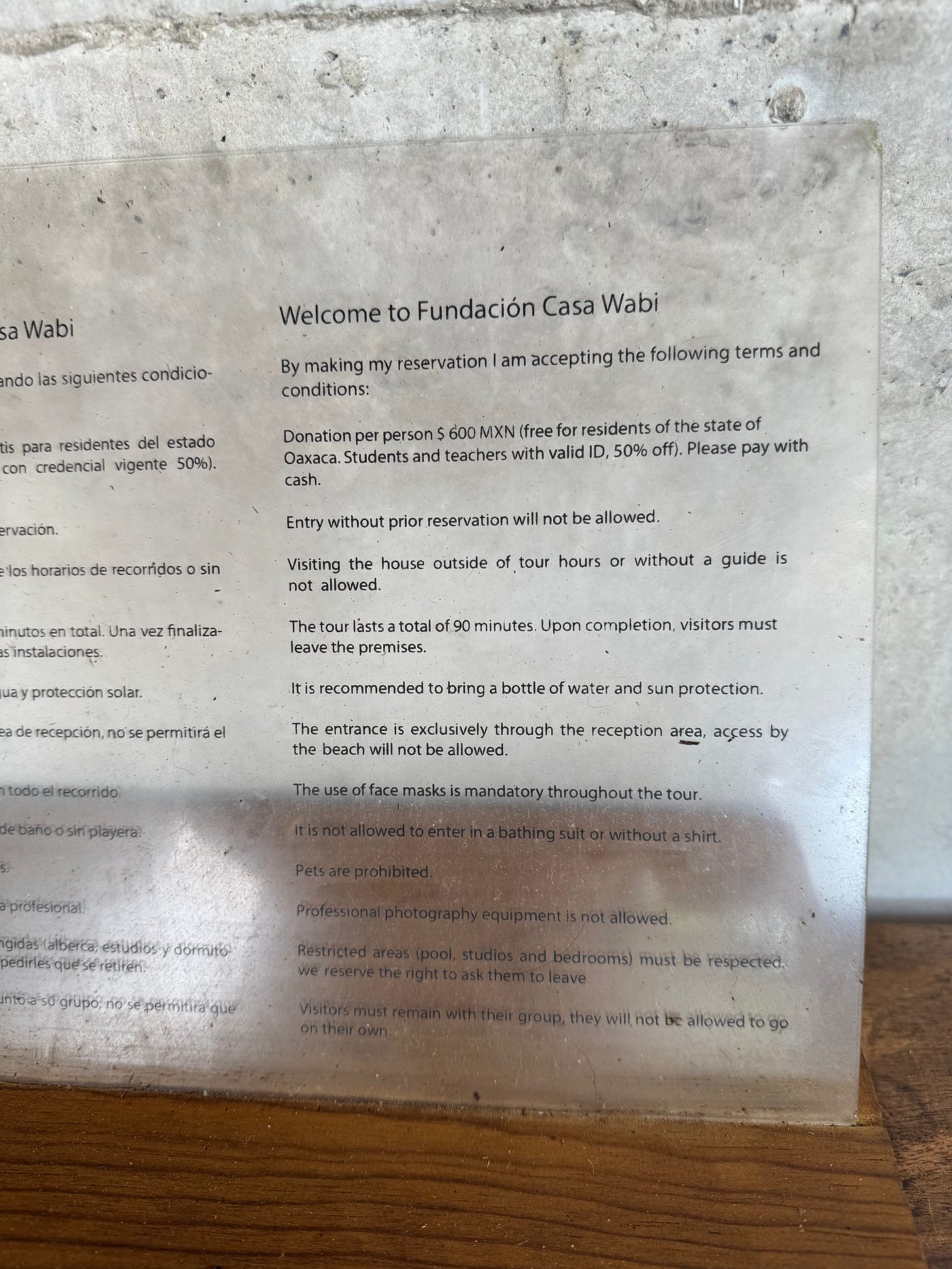
It’s the paid guests part which first made us question the mission of Casa Wabi. The organization bills itself as being a non-profit which benefits the community and while Oaxacan residents can obtain free entry, other guests have to pay a fee of 600 pesos to enter. This is outrageously expensive by Mexican standards, putting its entry fee on par with the Guggenheim and New York City Museum of Modern Art. The fact that students and teachers can get in for a 50% discount still makes admission impossibly expensive for the average Mexican.
Casa Wabi’s mercurial bent also includes a rental option, allowing you and up to 25 other guests to live in their artists-only space for $10,000 USD a night. Looking at their calendar there are virtually no dates blocked off, suggesting they schedule their artist-in-residence program (which lasts 5-6 weeks) around their wealthy, paying guests.
Casa Wabi is undeniably gorgeous. It’s a brutalist structure, a concrete labyrinth that is both gloriously sunny and also lusciously shady depending on the time of day and where you are within the complex.
If you’re not a fan of modern art, don’t visit Casa Wabi. The majority of what’s being exhibited comes from its founder, Bosco Sodi, and the work displayed is mostly made of bricks, blocks of concrete, or rough paintings on scraps of fabric. It’s so modern it made me—a fan of modern art—feel as if someone was trying to take advantage of me. True, art is all about interpretation, but isn’t a pile of bricks, sometimes, just a pile of bricks?
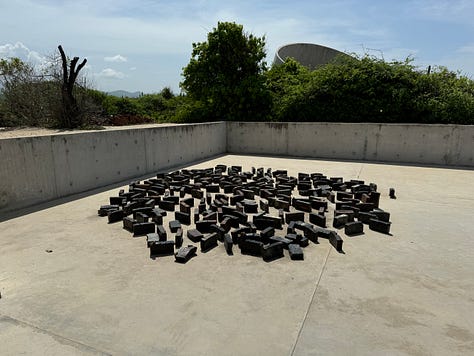
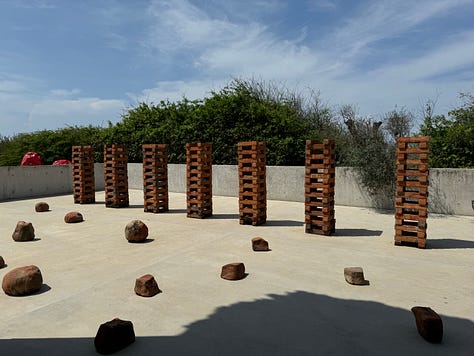
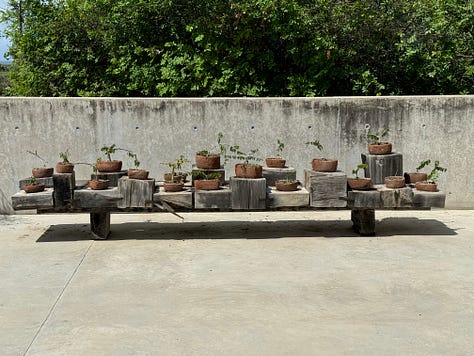
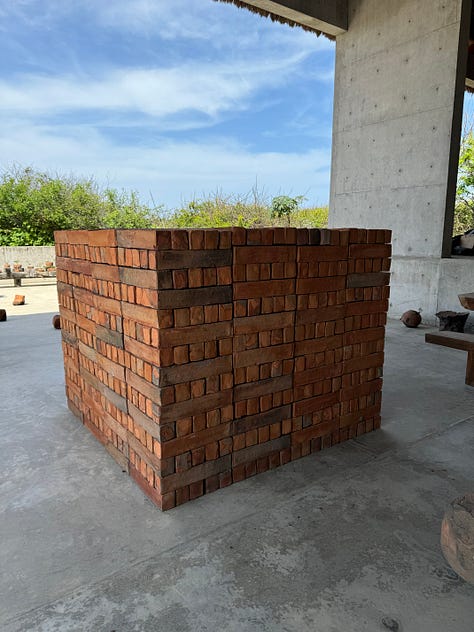
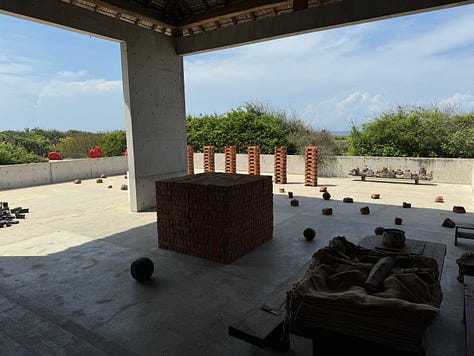

The thing that is the least likable about Casa Wabi is how incredibly seriously it takes itself. This is not a centuries-old, or even decades-old, art institution. It doesn’t even have much of an exhibit. While you will see the work of artists who are not Bosco Sodi, the majority of the quite small collection has been made by its founder. It’s really more Sodi’s place than anyone else’s. You also don’t get to see the studios of the artists-in-residence, and those artists are very deliberately segregated from visitors; entering the area where they live and work will get you ejected from Casa Wabi. Really the draw is the architecture and the building, and not the art inside of it, and that’s a shame.
Shortly upon arriving you’ll be led to a film theater made of wide, concrete steps, and you’ll be asked to recline on beanbags while they show you a short film explaining the organization.
The film discusses the good Casa Wabi does for the community, and highlights how visiting artists teach courses for local children and help encourage them to consider the importance of art. It’s a noble goal, but the film is primarily built around local women and children gushing about how much they love the organization. It feels exploitative and self-congratulatory, and left us wondering just what percentage of Casa Wabi’s donations actually go to these communities, versus to the upkeep of the building, or its staff and founders.
There were definitely moments that were wonderful. By far the most majestic part of Casa Wabi is the “observatory,” a large tube of concrete set into the ground which you enter through a small, square door.
The interior of the observatory highlights a slice of the sky like a portal, removing the vista set above from any other frame of reference. Sit on the bench in the center of the chamber and you’ll be mesmerized, drawn into a space that feels both futuristic and decrepit. It’s yet another piece of the complex which feels more like ruins than a part of a large, contemporary art center.

I can’t say we enjoyed our visit to Casa Wabi. It had gorgeous moments, and it’s in a stunning part of Mexico, on a particularly interesting portion of the coast. The building is beautiful, if somewhat severe and uncomfortable. But what really put us off was how shallow the entire visit felt. How strangely corporate. We left questioning the organization’s mission, and if given the opportunity to return, we would not.
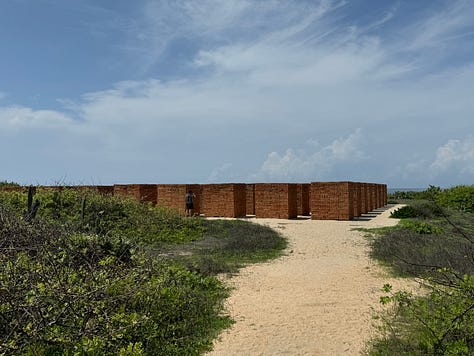
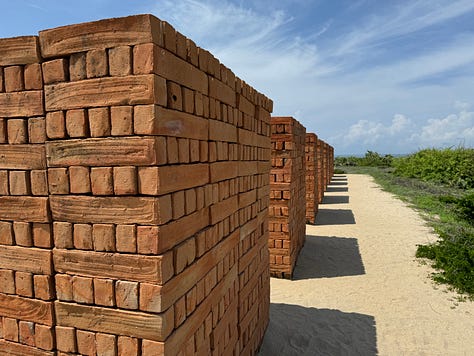
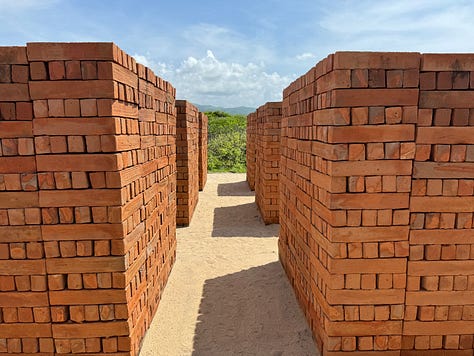
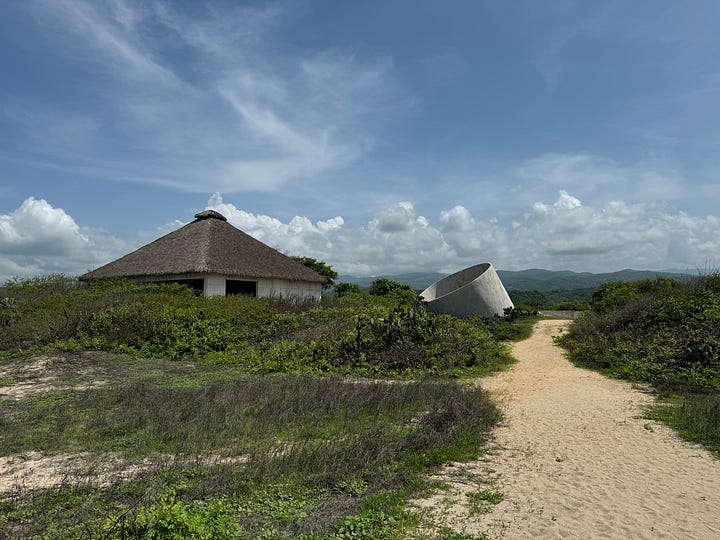
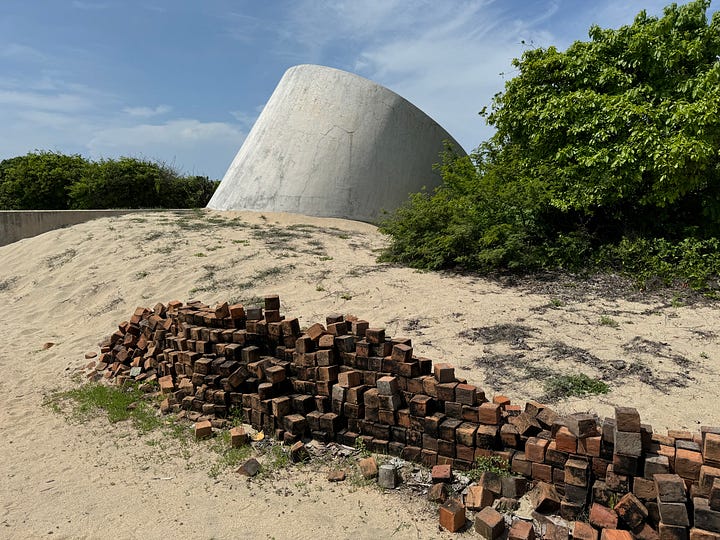




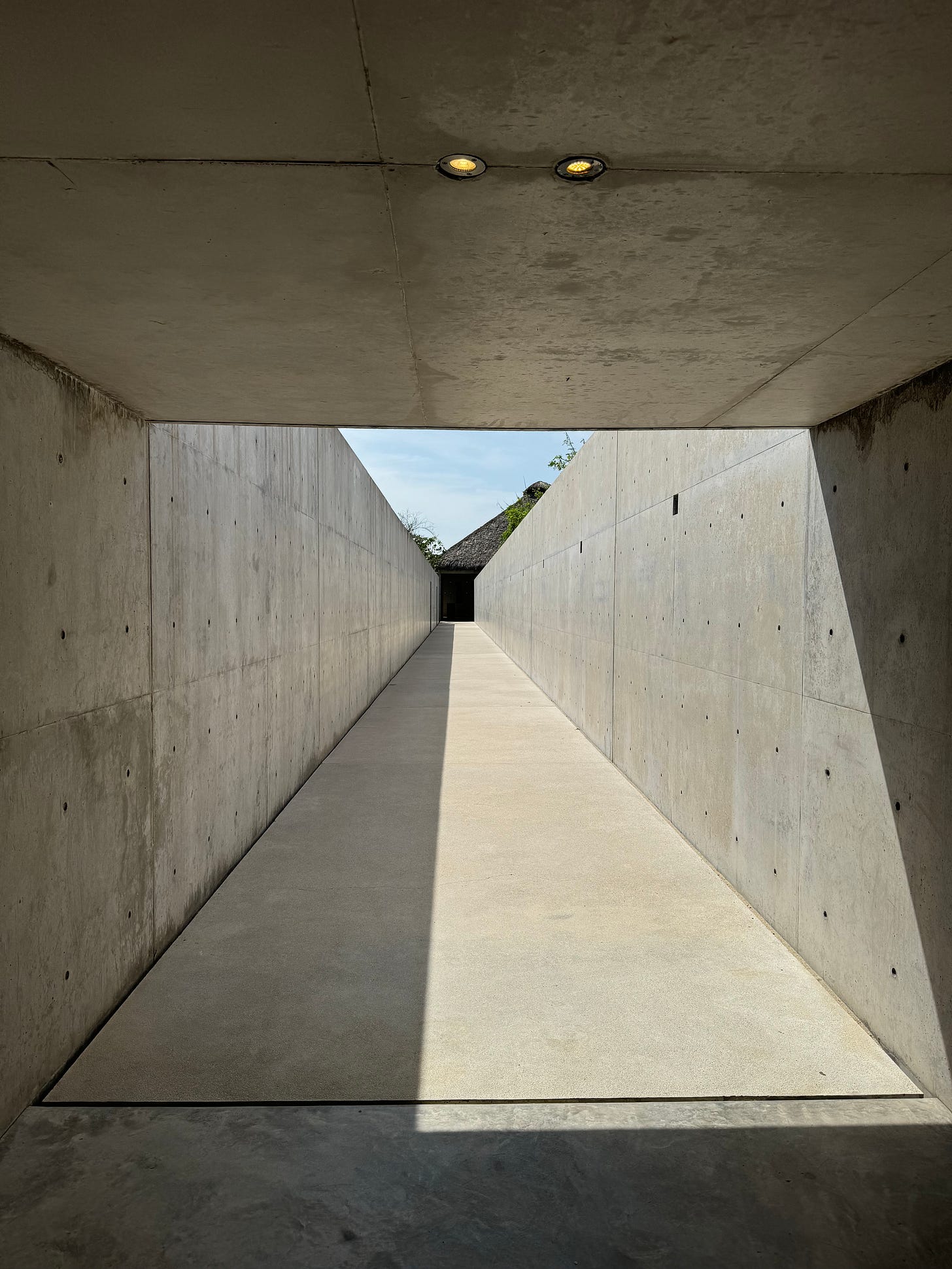
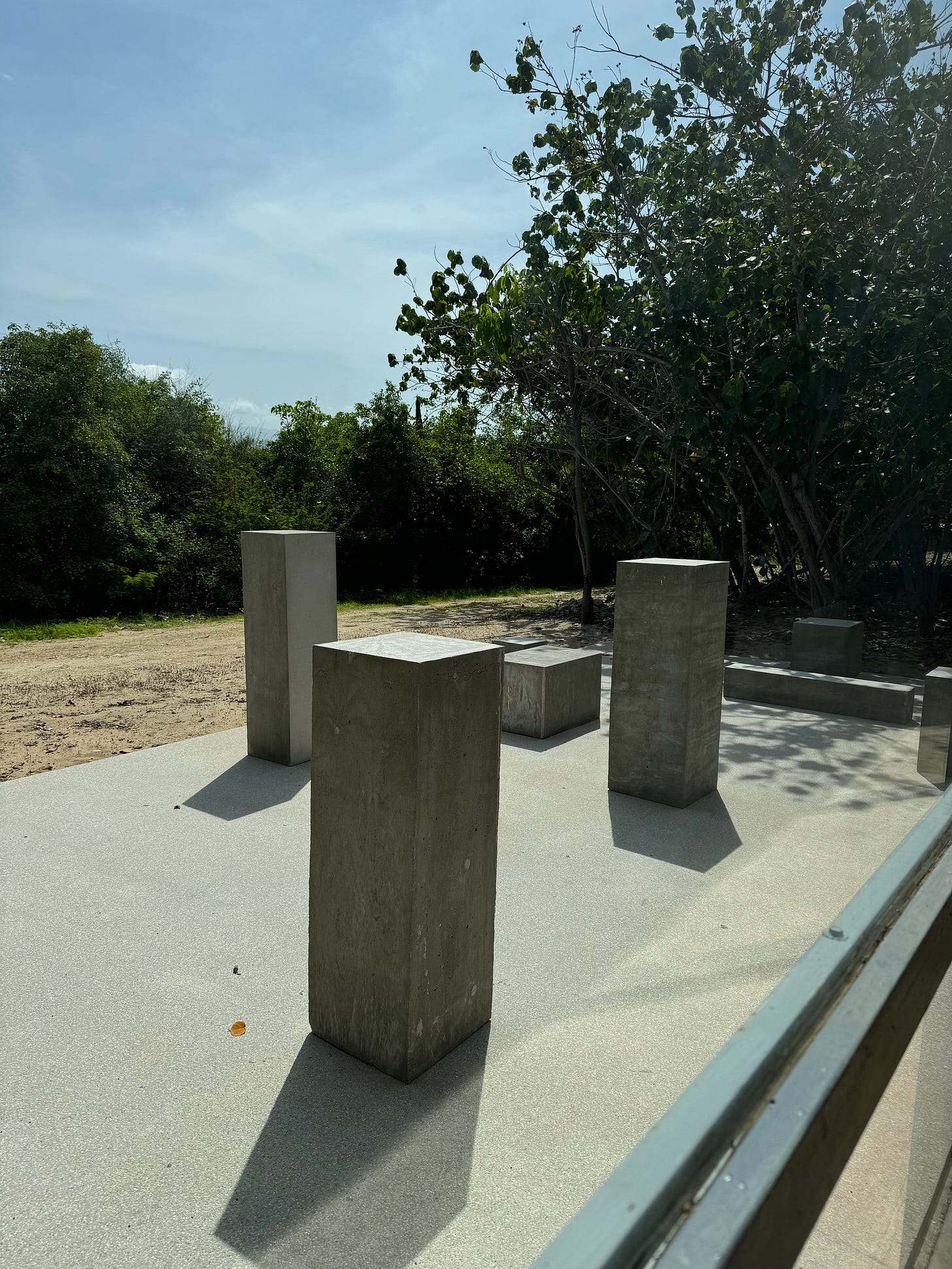
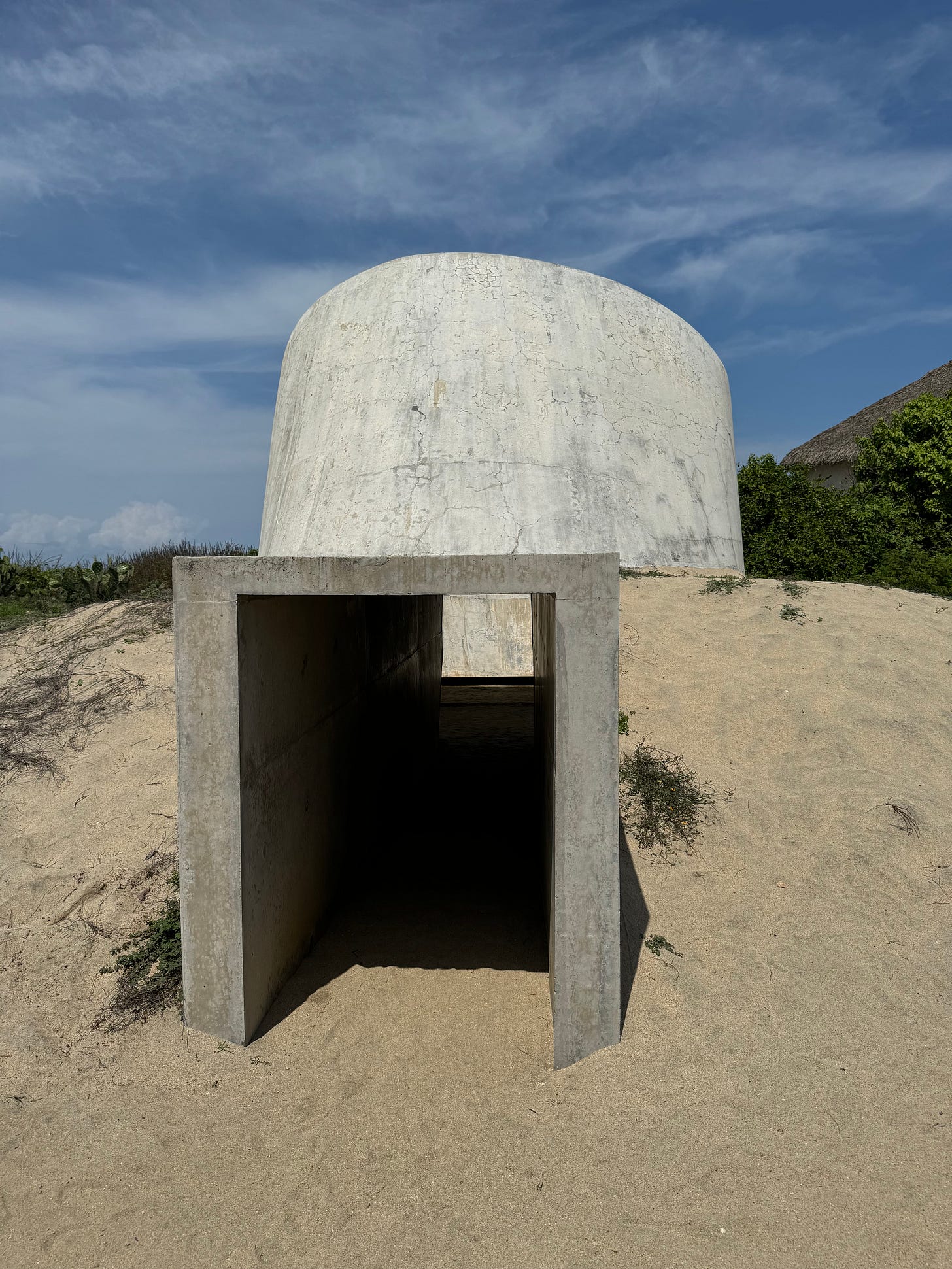

Oh STUNNING.
Did you exit through the gift shop? I was about to mark this on my map until you stated the cost. That is way too much for me. I wonder how many people who love modern art and have disposable income visit? How many Mexicans? It is definitely some place i'd be interested in but I just got some advice from a Colombian tour guide that made me think. He said not to over pay for things. When you do, it drives up the price for ordinary people.